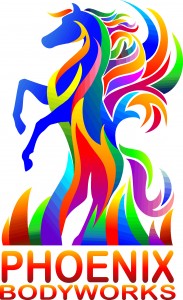Equine Massage Therapy Is it worth it?
When I started massage school, I did not think I would help a horse. How WRONG I was! In addition to Massage Therapy and Saddle Fitting I am a former tri-athlete. In my competitive days I never incorporated massage into my racing. Because we were uneducated about sports medicine my team mates and I frequently raced injured just as many horses today compete the circuits in pain.
I did invest in the right equipment, especially my racing bike’s saddle and my shoes. It is because I understand what difference good equipment can make to not only winning but to overall health I also educated myself about saddle fit.

Massage doesn’t affect just the muscles and cause relaxation. It can prevent injury by increasing flexibility. Massage increases circulation, therefore affecting the respiratory system, the organs, the endocrine system and lymphatic system. A horse is 80% muscle so yes, it definitely affects the musculoskeletal system.
Fascia is a connective tissue that winds throughout the muscles and organs. It can develop microscopic adhesions from hard exercise or trauma. Massage Therapy breaks down these adhesions. The muscles and fascia can then move in a more free fashion. That improves gait, performance and flexibility while reducing tightness, soreness and inflammation.
A horse in training can develop bad habits such due to stress and pain. Often it takes horses a long time to communicate to their owners their level of discomfort. Often riders report horses begin with swishing a tail, a little bucking or crow hopping here or there, biting when tacking up. These are all little signals you should do something, or rather stop doing something, like riding horses without relaxation, not providing appropriate saddle fit etc. An hour session of bodywork can bring relaxation to a horse. A flexible, pain free, relaxed horse is going to respond to training much easier than a tense, hurting horse.
How often should a horse receive bodywork? If there has been a pain issue, I suggest every 2-4 weeks, in the beginning then start spacing the time farther apart. Then, only before events to insure the rider is getting a “perfect” body to ride after all the investment of training, time and care. I teach clients to stretch their horses regularly as well as it teaches the horse to stretch himself and for the owner to see if there is an issue BEFORE it happens. Stretching helps hold my work longer.
I found that many of the horses I work with had pain in the back, shoulders and hips. I learned saddlefit and was looking for a pad to carry that would help the equine problems I encountered. After reviewing multiple pads with many trainers, I found ThinLine. ThinLine is my life-line now as I realize people will ride until they get a new saddle and until they get the horse and their seat moving in a soft and relaxed fashion. Good riding and training does not happen overnight. Even if you are a professional and you are working to re-teach a horse how to move in a relaxed downward stretching fashion it will take weeks if not months to overcome old habits. ThinLine accelerates this process by making both horse and rider instantly more comfortable.
After the saddle fits the ThinLine will provide shock absorption maintaining comfort for both horse and rider and it will not adversely affect good saddle fit. Too often I saw that clients were adding extra padding to saddles that were too narrow. This increases the restriction in a horse’s body. ThinLine answers this by laterally dispersing shock with little compression. It’s a thin material so there is no restriction. Less rider and saddle movement is better for the back muscles. Picture a person bouncing on a horse’s back with a less than perfect saddle fit. ThinLine assists in preventing this scenario.
ThinLine breathes…very important. Research has shown that overheated muscles and tendons are more prone to injury. If I have an older saddle with pressure points, ThinLine can definitely help. They are incomparable with saddles that fit well. A horse’s back changes often and ThinLine has a shim system so owners may adjust saddle fit as fitness and muscle development improve.
Trainers and clients often send the ThinLine pad they purchased off with their horses when they are sold. New owners ask if there is a problem but clients respond with the answer …”it will prevent a problem!”
Frequently clients wonder why I would suggest ThinLine to my massage therapy customers, will not the use of a ThinLine greatly reduce the number of required massage visits? Yes! My life work is to make horses and their owners happier, healthier and more successful. While I may reduce the number of times I am able to see these lovely clients there are so many horses to help I feel I have accomplished my mission when I hear the riders are winning and the horses are happy.
~ Charlotte Morris LMT, CEST
Charlotte Morris LMT, CEST
Serving the Northern Texas Community
Level I SRA practitioner & ART provider
512-914-6802 [border]
Posted by ThinLine ~ April 10th, 2013






